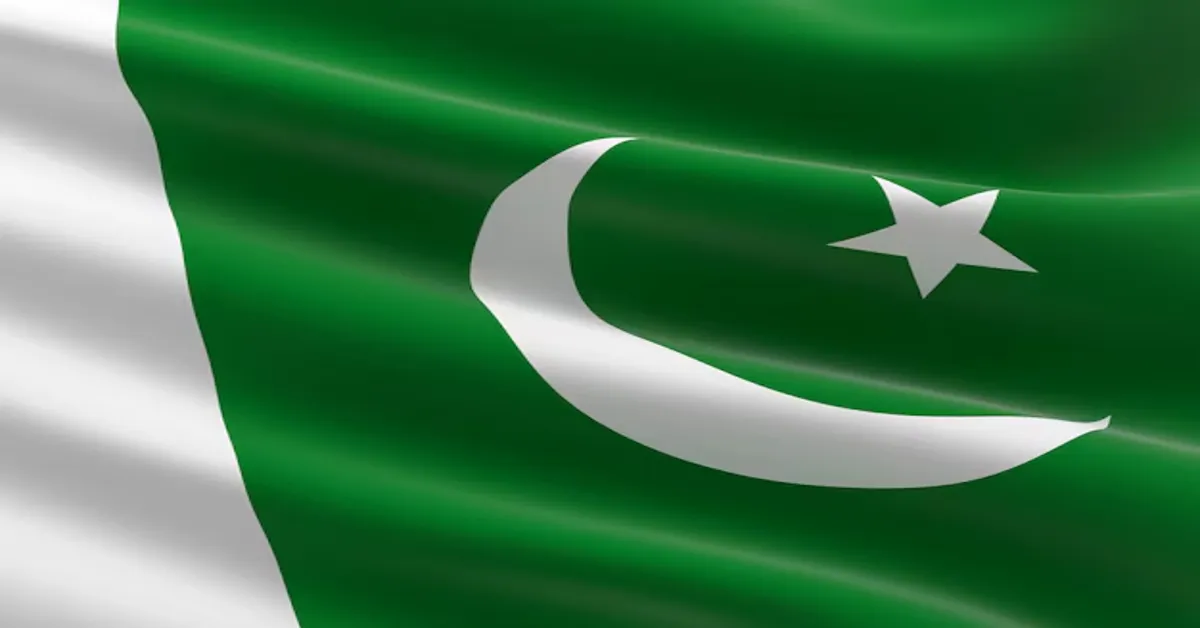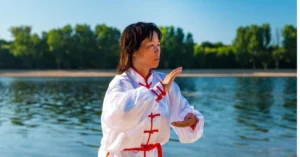The Pakistan flag is more than just a piece of cloth; it’s a symbol of unity, culture, and history. With its distinctive green field and white crescent moon, the flag tells stories that resonate deeply with the nation’s identity. Every design element holds profound significance, reflecting not only the aspirations but also the struggles of the people.
As we dive into its fascinating design elements, you’ll discover how each aspect contributes to Pakistan’s rich narrative. From historical roots to modern-day usage, every thread woven into this emblem carries meaning that transcends generations. Join us on this journey as we explore what makes the Pakistan flag special—a true representation of pride for millions around the globe!
Contents
Understanding the design elements of the Pakistan flag requires a closer look at its history, symbolism, and significance. Each component plays a crucial role in conveying the nation’s values and beliefs.
We’ll explore how these elements came together over time to form an emblem that resonates with many. The historical context enriches our understanding of why certain symbols were chosen.
Next, we’ll dive into the visual aspects—colors, shapes, and their meanings. This is where you’ll see how art combines with identity to create something powerful and evocative.
Additionally, it’s important to touch on national flag protocols and occasions when this banner is proudly displayed by public officials. These practices not only honor tradition but also remind us of what it means to stand united under one flag. A detailed exploration awaits!
History of the Pakistan flag
The history of the Pakistan flag is intertwined with the nation’s quest for identity and independence. The flag was officially adopted on August 11, 1947, just days before Pakistan emerged as a sovereign state. Its design reflects a long struggle against colonialism and emphasizes unity among diverse communities.
Before its adoption, various flags were used during different phases of the independence movement. One notable precursor was the All-India Muslim League’s flag from the early 20th century, featuring a crescent moon and star—elements that would later become central to Pakistan’s national symbol.
The green color symbolizes Islam, which plays a vital role in Pakistani culture and society. The white stripe represents religious minorities residing within the country, highlighting inclusivity amidst diversity.
This carefully crafted emblem stands as more than just fabric; it embodies hopes for peace and prosperity while reminding citizens of their shared heritage. Each time it waves proudly in the wind, it tells stories of resilience and dreams fulfilled.
Symbolism
The Pakistan flag is rich in symbolism, reflecting the nation’s identity and heritage. The dominant green color represents Islam, which is a central tenet of Pakistani culture. It signifies peace, prosperity, and the hope for a bright future.
The white stripe on the left side embodies religious minorities’ rights and their integral role in society. This inclusion highlights Pakistan’s commitment to diversity within its Islamic foundation.
At the heart of the flag sits a crescent moon and star. The crescent symbolizes progress and enlightenment, while the five-pointed star stands for knowledge and light. Together they illustrate aspirations toward growth in various realms—socially, culturally, and economically.
This carefully crafted design serves not only as an emblem but also as a reminder of unity among different communities within Pakistan. Each element works together to create a narrative that resonates deeply with citizens across generations.
Design
The design of the Pakistan flag is both striking and meaningful. A deep green field dominates, symbolizing the country’s Muslim majority and its rich heritage. This choice reflects a sense of hope and prosperity for the nation.
Prominently displayed on this green background is a white crescent moon and a five-pointed star. The crescent represents progress, while the star symbolizes light and knowledge. Together, they embody aspirations for growth in various facets of life—socially, politically, and economically.
The ratio of width to length is 2:3, which aligns with many national flags around the world. This proportion gives it an aesthetically pleasing balance that enhances its visibility during events or displays.
A vertical white stripe runs along one side of the flag, representing religious minorities within Pakistan. It highlights inclusivity in a diverse society where multiple faiths coexist peacefully alongside Islam.
National flag protocols
The national flag of Pakistan is not just a symbol; it comes with protocols that reflect its importance. These guidelines dictate how the flag should be treated, displayed, and honored. Respecting these protocols is crucial for maintaining the dignity associated with the flag.
One key protocol involves never allowing the flag to touch the ground or water. Doing so would be seen as disrespectful and contrary to its significance in representing the nation. It’s also essential to ensure that when hoisted, it flies higher than any other flags in proximity.
When displaying the Pakistan flag on buildings, it’s recommended to do so during daylight hours unless illuminated at night. The correct orientation matters too—the crescent and star must always face upward, signifying progress and enlightenment.
Public institutions have specific rules regarding when and how often they display the national flag. Observance of these practices helps instill a sense of pride among citizens while honoring those who fought for their freedom under this emblematic banner.
Flag flying days
The Pakistan flag holds a special place in the hearts of its citizens, and certain days are designated for flying it with pride. These occasions are steeped in national significance. The most notable day is Independence Day on August 14, commemorating the country’s freedom from British rule in 1947.
Another important date is Pakistan Day on March 23. This day marks the Lahore Resolution of 1940, which laid the foundation for an independent state. Celebrations often involve parades and gatherings where the flag features prominently.
Defense Day on September 6 also calls for displaying the flag as a tribute to those who sacrificed their lives defending the nation during conflicts. It serves as a reminder of unity among citizens in facing challenges.
These specific flying days evoke patriotism and foster national identity among people across all walks of life. During these times, streets and homes transform into vibrant displays adorned with green flags fluttering against blue skies.
Use by public officials
Public officials in Pakistan hold a unique responsibility when it comes to the display of the national flag. The pakistan flag is not just a piece of fabric; it embodies the spirit and unity of the nation. Therefore, its usage by officials reflects their respect for this powerful symbol.
When addressing citizens or representing government institutions, public officials are expected to display the flag prominently. This shows patriotism and reinforces national pride among communities. Whether at government buildings or during official ceremonies, the pakistan flag takes center stage.
Moreover, there are specific guidelines regarding how officials should handle and care for the flag. They must ensure that it is raised correctly and treated with dignity at all times. Any damage inflicted on it can be seen as disrespectful to those who fought for independence.
Officials also play a critical role in educating citizens about proper flag etiquette. By promoting awareness around this topic, they help instill a sense of honor associated with displaying the pakistan flag throughout society.
Milestones
The journey of the Pakistan flag is marked by significant milestones that reflect the nation’s evolution. The initial design emerged during the struggle for independence, symbolizing hope and unity among diverse ethnic groups. This early representation laid a strong foundation for national identity.
On August 11, 1947, just days before independence, the flag was officially adopted by the Constituent Assembly of Pakistan. Its selection showcased not only aesthetic appeal but also deep-rooted symbolism relevant to Islamic heritage and cultural diversity.
In subsequent years, various events have further solidified its importance. Each year on March 23rd, Pakistan Day celebrates both the adoption of this emblem and commemorates critical moments in history when unity was paramount.
The flag has been raised at countless international platforms over time as well. It serves as a reminder of resilience amidst challenges faced by citizens while showcasing solidarity with global communities that share similar values.
READ MORE:Hsnime: The Rising Trend Connecting Fans and Creativity
Conclusion
The Pakistan flag is more than just a piece of cloth; it’s a powerful symbol that embodies the country’s rich heritage and aspirations. Each element holds deep meaning, connecting the nation to its history while also reflecting its values. The green field represents Islam and prosperity, while the white stripe signifies peace and religious minorities living harmoniously within the country.
Understanding national flag protocols helps us appreciate this emblem even more. Proper etiquette in displaying the Pakistan flag shows respect for what it stands for—a sense of unity among citizens. Observing designated flag flying days reinforces pride in national identity.
Public officials are often seen using or displaying this iconic banner during official events, underlining its significance in state affairs. As milestones are celebrated, from Independence Day to moments of achievement on international platforms, the flag serves as a reminder of collective strength and resilience.
Embracing these design elements fosters a deeper connection with not only our past but also our future as a nation. The Pakistan flag will always remain an enduring symbol of hope and progress for generations to come.









